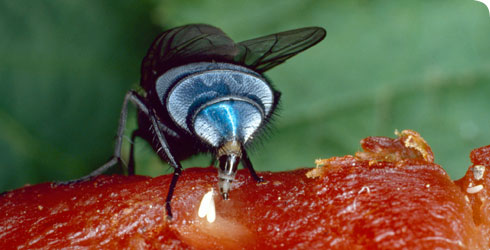Population biology and management
Population biology
In 1957, MacLeod and Donnelly estimated the local population density of C. vicina in an area near Carlisle to be:
- 50 to 200 flies per acre in August
- 400 to 1000 in September
- 700 to 1000 in October
A latter study by the same team in 1962 found local aggregations, or clusters, of blowflies. Many were associated with particular habitat features but many were not.
It is also clear that when conditions are good, blowfly populations often become over crowded, leading to a subsequent fall in population numbers as competition for the available carcasses outstrips supply.
Trends
Calliphora vicina is considered to be highly synanthropic in most parts of its range. Overall numbers have probably increased over recent centuries in association with human populations.
Management
Existing management practices are aimed at killing or excluding blowflies (for example, by fly screening) so that they, and others with similar feeding habits, don't impact on food hygiene standards.
Toolbox
Glossary
Synanthropic
Associated with humans.
